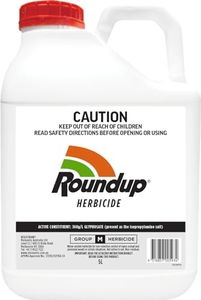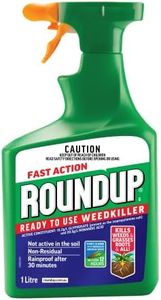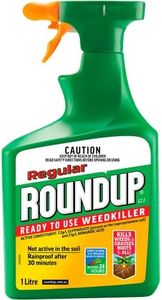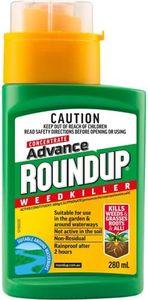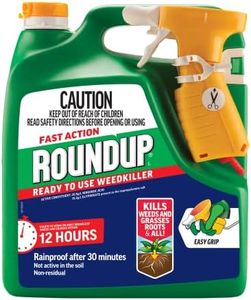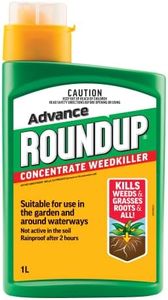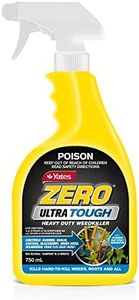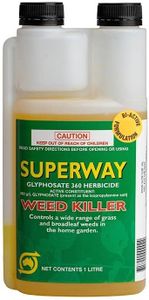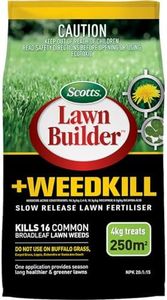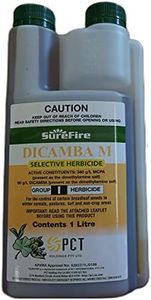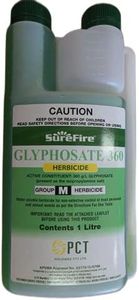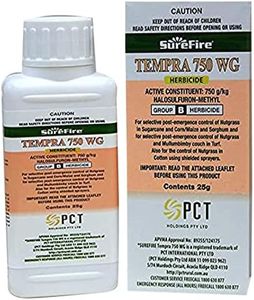We Use CookiesWe use cookies to enhance the security, performance,
functionality and for analytical and promotional activities. By continuing to browse this site you
are agreeing to our privacy policy
10 Best Weed And Crabgrass Killers
From leading brands and best sellers available on the web.Buying Guide for the Best Weed And Crabgrass Killers
Choosing the right weed and crabgrass killer can greatly improve the health and appearance of your lawn or garden. The key to finding the best one is understanding your specific problem—whether you’re dealing with broadleaf weeds, crabgrass, or both—and considering how and where you want to apply the product. By learning about the main types and key features, you can confidently pick a solution that’s safe, effective, and matches your lawn care goals.Target Weed TypesThis refers to the specific kinds of weeds or grasses that the product is designed to kill. Some formulas are made just for broadleaf weeds like dandelions, others focus on grassy weeds like crabgrass, and some tackle both. When choosing a product, it’s important to identify what kind of weeds you have. Products labeled as 'selective' target certain weeds without harming grass, while 'non-selective' ones kill most plants, including grass. If you want to keep your lawn but get rid of weeds, look for a selective product aimed at your problem plants. For clearing out entire areas, a non-selective option might be best.
Application MethodThis means how you will put the product on your lawn or garden. There are liquids, granules, and ready-to-use sprays. Liquids can be applied with a sprayer for spot treatments or large areas, while granules are spread over the surface and usually watered in. Ready-to-use sprays are quick for smaller jobs. Think about the area you need to treat—large lawns might be easier with liquids or granules, while small patches can be handled with sprays. Your comfort with using tools like sprayers or spreaders also matters when choosing the method.
Time of Application (Pre-Emergent vs. Post-Emergent)A very important detail is whether the product works as a 'pre-emergent' or 'post-emergent' killer. Pre-emergent weed killers stop weeds before they sprout, so they’re applied early in the season, while post-emergent products tackle weeds that have already appeared. If you’re trying to prevent weeds from showing up, choose a pre-emergent and apply it before weeds begin to grow. If you already see weeds, a post-emergent is the right choice. Matching the timing with what’s happening in your yard ensures better results.
Safety for Lawns and Other PlantsSome products are made to kill weeds without damaging your existing grass or garden plants, while others will kill any plant they touch. Look for labeling about whether the product is 'lawn safe' or 'safe for use around ornamentals.' If you want a pristine lawn, make sure the product won’t harm your grass type. If you’re treating cracks in driveways or areas where you don’t want anything to grow, a non-selective, stronger option works better.
Residual EffectThis is about how long the product continues working after the initial application. Some weed killers break down quickly and require more frequent use, while others provide long-term control and prevent new weeds from sprouting for weeks or months. If you want less maintenance, pick one with longer residual effects, but be careful if you plan to plant something new soon—the lingering chemicals might affect new plants. For instant fixes or quick replanting, look for products with short or no residual activity.
Pet and Child SafetyMany weed killers have safety instructions related to pets and children. Some are safe once they dry, while others require longer waiting periods or extra caution. If you have kids or animals that play outside, look for products specifically labeled as safe for use around them, and always follow the provided guidelines about when it’s okay to return to the treated area.
